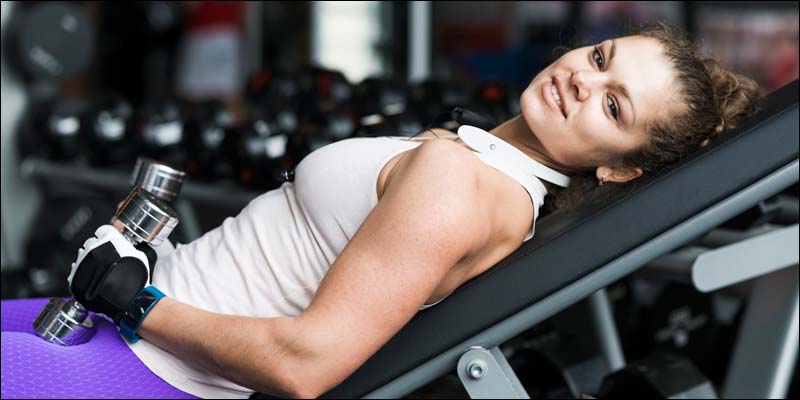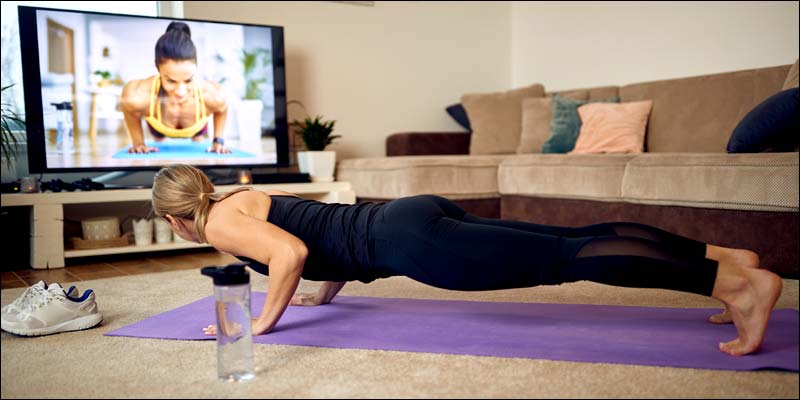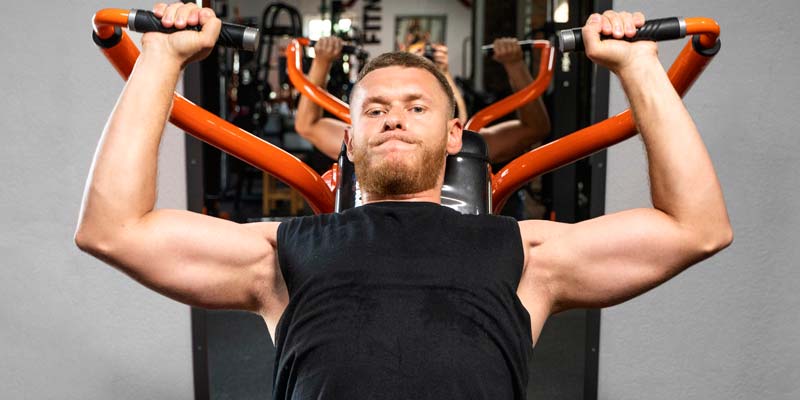Building a strong, defined upper chest is a common goal among fitness enthusiasts. A well-developed upper chest not only enhances the overall aesthetics of your physique but also contributes to better strength and functionality. This comprehensive guide will provide you with everything you need to know about upper chest workouts, from the best exercises to effective training tips.
Why Focus on the Upper Chest?
The upper chest is often a neglected area in many workout routines, but targeting it can lead to a more balanced and symmetrical chest. The pectoralis major has two primary parts: the clavicular head (upper chest) and the sternal head (lower chest). By emphasizing the upper chest, you can create a fuller, more sculpted look.
Anatomy of the Upper Chest
Understanding the anatomy of the upper chest is crucial for effective training. The upper chest is primarily composed of the clavicular head of the pectoralis major. This muscle group is responsible for movements such as flexion, adduction, and internal rotation of the shoulder. Knowing these functions can help you select exercises that optimally target this area.
10 Best Upper Chest Workouts

Upper chest workouts focus on exercises that target the clavicular portion of the pectoral muscles, helping to develop a well-rounded chest appearance. Incline bench presses, incline dumbbell presses, and cable crossovers set high are effective for strengthening and shaping the upper chest region.
1. Incline Bench Press
The incline bench press is a cornerstone exercise for upper chest development. By setting the bench at a 30-45 degree angle, you place more emphasis on the clavicular head of the pectoralis major.
How to Perform:
- Lie on an incline bench with your feet flat on the floor.
- Grip the barbell slightly wider than shoulder-width apart.
- Lower the barbell to your upper chest, then press it back up.
2. Incline Dumbbell Press
Similar to the incline bench press, the incline dumbbell press allows for a greater range of motion and individual arm movement, which can help in addressing muscle imbalances.
How to Perform:
- Sit on an incline bench with a dumbbell in each hand.
- Press the dumbbells upward until your arms are fully extended.
- Slowly lower the dumbbells back to shoulder level.
3. Incline Dumbbell Flyes
Incline dumbbell flyes are excellent for stretching and contracting the upper chest muscles, providing a deep burn that promotes muscle growth.
How to Perform:
- Lie on an incline bench with a dumbbell in each hand.
- With a slight bend in your elbows, open your arms wide until you feel a stretch in your chest.
- Bring the dumbbells back together at the top.
4. Reverse-Grip Bench Press
The reverse-grip bench press is an underrated exercise that targets the upper chest effectively by changing the grip.
How to Perform:
- Lie on a flat bench and grip the barbell with an underhand grip.
- Lower the bar to your upper chest and press it back up.
5. Cable Crossovers (High to Low)
Cable crossovers done from a high pulley position target the upper chest by emphasizing the downward and inward motion of the arms.
How to Perform:
- Set the pulleys at a high position and stand between them.
- With a handle in each hand, pull the cables downward and together in front of your chest.
- Slowly return to the starting position.
6. Low to High Cable Chest Fly
The cable chest fly is an isolation exercise that focuses on your pectoral muscles. When you set the pulleys low and pull the handles upward, this exercise specifically targets your upper chest with continuous tension. This movement is also known as the cable crossover.
How to Perform the Low to High Cable Chest Fly:
- Attach a pair of handles to the low position of a cable cross machine. Grip the handles, step forward, and lean slightly forward.
- With a slight bend in your arms, push the handles upward until they meet in front of your chest.
- Slowly and with control, return the handles to the starting position.
7. Dumbbell Chest Fly
The dumbbell chest fly is another isolation exercise for your chest and front deltoids. Like the bench press, it works all the muscle fibers in your pectorals. To emphasize your upper chest, you can use a slight incline on the bench.
How to Perform the Dumbbell Chest Fly:
- Lie on a bench and lift a pair of dumbbells to the starting position above your chest.
- With your arms almost completely straight, lower the dumbbells out to your sides.
- Once you have lowered the dumbbells as deep as possible, reverse the motion and return the dumbbells to the starting position.
8. Machine Chest Fly
The machine chest fly is another variant that isolates your chest and front deltoids. Similar to the lying dumbbell chest fly, the machine chest fly works all the muscle fibers in your pectorals, including the upper chest.
How to Perform the Machine Chest Fly:
- Adjust the back support and handles so you can grip the handles at shoulder height and achieve a full range of motion.
- With a slight bend in your arms, push the handles forward until they meet in front of your body.
- Slowly and with control, return the handles to the starting position.
9. Dumbbell Front Raise
The dumbbell front raise is an isolation exercise that targets the muscles responsible for lifting your arm from a hanging position, specifically your front deltoids and upper chest muscles.
It’s important to start with a very light weight and focus on proper form and muscle engagement. For extra stability, you can choose to do barbell front raises instead.
How to Perform the Dumbbell Front Raise:
- Hold a pair of dumbbells with straight arms in front of your hips.
- With control, lift the dumbbells forward with straight arms until they reach shoulder height.
- Reverse the movement and lower the dumbbells with control back to the starting position.
10. Decline Push-Ups
The decline push-up is a variation of the regular push-up where you place your feet on an elevated surface. This makes the exercise more challenging and shifts more of the work toward your upper chest.
How to Perform Decline Push-Ups:
- Start by placing your feet on a low bench or box and your hands on the floor, slightly wider than shoulder-width apart.
- Form a straight line from your head to your feet and engage your core.
- Lower yourself as deep as you can while inhaling.
- Reverse the motion and push yourself back up to straight arms while exhaling.
Training Tips for Optimal Upper Chest Development
Focus on Proper Form
Maintaining proper form is essential for preventing injuries and ensuring that you are effectively targeting the upper chest. Pay attention to your posture and the movement of your shoulders and arms.
Gradually Increase the Weight
Progressive overload is key to muscle growth. Gradually increase the weight you lift to continuously challenge your muscles and stimulate growth.
Incorporate Compound and Isolation Exercises
A combination of compound movements (like the incline bench press) and isolation exercises (like incline dumbbell flies) will help you develop a well-rounded upper chest.
Adjust the Bench Angle
Varying the angle of the incline bench can target different parts of the upper chest. Experiment with angles between 30 to 45 degrees to find what works best for you.
Use a Mind-Muscle Connection
Focusing on the contraction of your upper chest during exercises can enhance muscle activation and growth. Visualize the muscles working as you perform each repetition.
Sample Upper Chest Workouts Routine
Here’s a sample routine to get you started on your upper chest development journey:
Warm-Up:
- 5-10 minutes of light cardio
- Dynamic stretching
Workout:
- Incline Bench Press: 4 sets of 8-12 reps
- Incline Dumbbell Press: 3 sets of 10-12 reps
- Incline Dumbbell Flyes: 3 sets of 12-15 reps
- Reverse-Grip Bench Press: 3 sets of 8-10 reps
- Cable Crossovers (High to Low): 3 sets of 15 reps
Cool Down:
- Static stretching
- Foam rolling
Upper Chest Workouts at Home

Every man who exercises aims for a muscular chest, but spending countless hours bench pressing in the gym isn’t the sole method to build your pecs. With the right knowledge, you can also achieve an effective upper chest workout at home.
- Wide Press-up You’ve probably done these before. To do it, perform a standard press-up, but with your hands positioned wider than shoulder-width apart.
- Alternating Shuffle Press-up Start in the standard press-up position. Move your right hand to the left until both hands are next to each other. Slide your left hand further left until your hands are shoulder-width apart again. Perform a press-up and repeat, alternating the direction each time. This counts as two press-ups but one repetition.
- Diamond Press-up Place your hands close together so that the tips of your thumbs and index fingers touch, forming a diamond shape on the floor. Keep your elbows tucked close to your body as you lower yourself down and push back up.
- One-arm Press-up Begin in a press-up position with your right hand on the floor and your left hand elevated on a box or step. Perform a press-up in this position. Switch arms and repeat. This completes one repetition.
- Cross-over Elevated Press-up Start with a one-arm press-up position, using a box for support with your left hand. Lift your right hand beside your left hand. Move your left hand down to the floor, positioning both hands shoulder-width apart. Perform a press-up in this position. This sequence counts as one repetition.
Upper Chest Workouts: Nutrition and Recovery
Eat a Balanced Diet
A balanced diet rich in protein, healthy fats, and carbohydrates will support muscle growth and recovery. Aim for lean proteins like chicken, fish, and legumes, and include plenty of vegetables and whole grains.
Stay Hydrated
Hydration is critical for muscle function and recovery. Drink plenty of water throughout the day, especially around your workout times.
Get Enough Sleep
Muscle recovery happens during rest. Ensure you get 7-9 hours of sleep each night to allow your muscles to repair and grow.
Supplement Wisely
Consider supplements like whey protein, BCAAs, and creatine to enhance your muscle-building efforts. Consult with a healthcare professional before starting any new supplement regimen.
Common Mistakes to Avoid
Overtraining
While it’s important to challenge your muscles, overtraining can lead to injuries and hinder progress. Ensure you allow adequate rest between workouts.
Neglecting Other Chest Areas
While focusing on the upper chest is important, neglecting the mid and lower chest can lead to imbalances. Incorporate a variety of chest exercises in your routine.
Ignoring Warm-Ups and Cool Downs
Skipping warm-ups and cool downs can increase the risk of injuries and delay recovery. Always start with a proper warm-up and finish with a cool down.
Conclusion
Developing a strong and defined upper chest requires a combination of targeted exercises, proper form, and consistent effort. By incorporating the exercises and tips outlined in this guide, you can achieve impressive upper chest gains and enhance your overall physique. Remember, the key to success is consistency and dedication to your workout routine and nutrition plan. Happy lifting!
FAQs
Q1. How do I build my upper chest?
Not to mention that the upper pectorals are probably the most important muscles to train to get that full, ripped-chest look. So, our top six exercises to help you get that chest are the incline dumbbell fly, incline bench press, reverse grip Bench Press, cable crossover, decline push-up, and Dumbbell Front Raise.
Q2. What are the top 3 chest exercises?
The best exercises for chest muscle growth are the standard bench press for the middle pectorals, the incline bench press for the upper chest muscles, and the weighted dip with heavy barbell plates for the lower chest.

